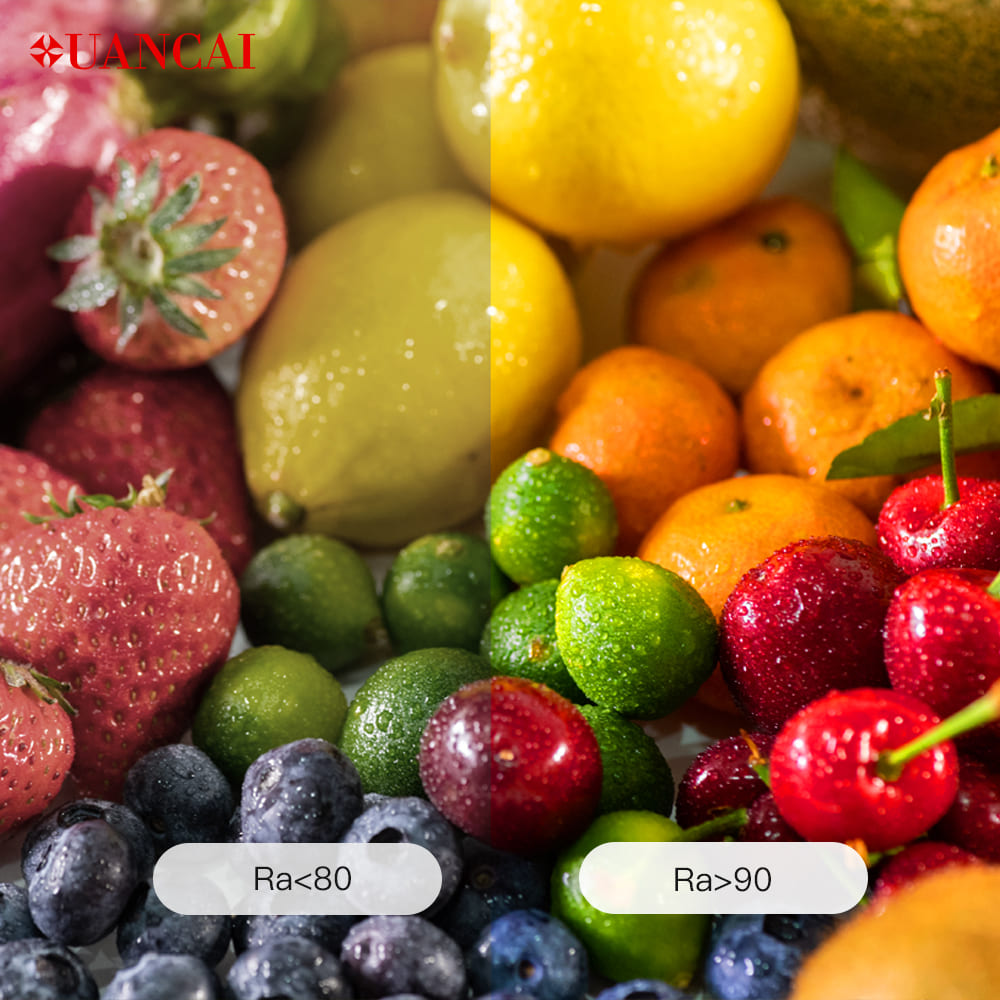The reason we can see the world in a riot of colors is due to sunlight, which is a kind of polychromatic light that reflects monochromatic light on different colored objects, rendering the colors we see.
The complex mixture of light in sunlight, arranged through different wavelengths, is the spectrum of sunlight, which contains the spectral curves of ultraviolet, visible, and infrared light, and the spectrum of sunlight can be called the full spectrum.
What is a full spectrum LED ?
Full spectrum refers to the spectrum containing UV, visible light, infrared light spectral curve, and in the visible part of the red, green, and blue ratio and sunlight approximation, color rendering index Ra close to 100 of the spectrum.
The spectrum of sunlight can be called full spectrum, the color temperature is changed with the seasons and morning and evening time changes, so the spectrum of full spectrum lamps should be changed with the time change and successively change the color temperature, simulate the natural light environment, in order to be more in line with the natural growth of biological laws.
Full-spectrum LED should simulate 5000K solar spectrum as much as possible. Ordinary LEDs have relatively high blue light spectrum and lack of violet light, cyan light, short-wave green light, and long-wave red light parts. Currently, full-spectrum LEDs are realized by chip + phosphor, and the full spectrum is made up by adding violet chips or adding phosphor with wavelengths of concave region between blue peak and phosphor peak.
What are the characteristics of full spectrum LEDs?
Full-spectrum LED by completing the lack of short-wave violet, cyan, short-wave green, long-wave red part of the spectrum, greatly enhancing the spectral continuity, and completeness, so that the color gamut is wide, and the full spectrum of the sunlight is closer.
Short-wave “violet light” helps the human body synthesize vitamin D, promote the body’s absorption of calcium, the wavelength of 400nm to 420nm violet light also helps plants to form anthocyanins and resist the elongation of branches and leaves. Long-wave “red light” in the flowering and fruiting period can promote the overall growth of plants.
The blue light band of the common LED spectrum is relatively large, and excessive blue light and improper use of lighting fixtures can cause visual damage. Blue light suppresses melatonin secretion and may cause insomnia. Full spectrum LED lights can effectively reduce the blue light hazard of lighting LED light sources.
What is color rendering?
The degree to which a light source renders the color of an object is called color rendering, or the degree of color fidelity. The color rendering index of sunlight is defined as 100, and the closer the color rendering index (Ra) value is to 100, the better the color rendering is.
Evaluation of the light source color rendering using 15 sample colors, special color rendering R9 is to evaluate the LED on the vivid color red reproduction quality indicators, Ra, R9 is the same as a higher value is the performance of high-quality LED.

Compared with ordinary LED, The full-spectrum LED spectrum is more continuous, a wider color gamut; color rendering index Ra greatly improved, close to 100; which special color rendering index of R9 can be as high as 95 or more.
To learn more about full spectrum chips and strips, please add WhatsApp or leave your email address!
